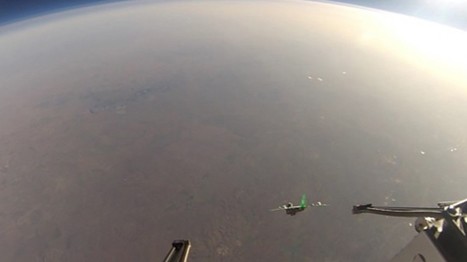High-altitude spy drones could help China dominate “near space” – a region of the Earth’s atmosphere that is at the heart of a modern-day space race.
Near space, which begins at about 20km above sea level, has until now been regarded a “death zone” for drones – thin air at this altitude makes it hard to generate lift, while extremely low temperatures mean electronic components like batteries are prone to fail.
However, a new type of Chinese-developed drone that is undergoing testing appears to have overcome such difficulties, marking a significant step towards China’s ambitions of exploiting near space for purposes of military intelligence.
Near space has long been seen as a promising frontier for intelligence services, but has remained relatively untapped because it is too high for most aeroplanes to operate, and too low for satellites.
The goal of scientists is to develop a durable near space vehicle capable of observing large areas for weeks, months or even years on end. Drones, which would cost just a fraction of what a satellite with comparable abilities would cost, are seen as one of the best ways of reaching that goal.
Until now, the Northrop Grumman RQ-4 Global Hawk, limited to an altitude of about 19km, has been the highest flying drone in use.
But last month, a research facility in Inner Mongolia successfully tested an experimental drone at an altitude of 25km.
The test involved two experimental unmanned aerial vehicles being sent up on a high pressure balloon before being deployed at different altitudes. The second drone was deployed at an altitude of 9km.
Each of the drones, which are about the size of a bat, was launched using an electromagnetic pulse that accelerated them from zero to 100km/h within a space about the length of an arm.
“It shot out like a bullet,” said Yang Yanchu, lead scientist of the project with the Academy of Optoelectronics at the Chinese Academy of Sciences in Beijing.
The drones then glided towards their targets more than 100km away, adjusting course and altitude in flight without human intervention. On-board sensors beamed data back to a ground station.



 Your new post is loading...
Your new post is loading...








(Chinese) Eye in the Sky